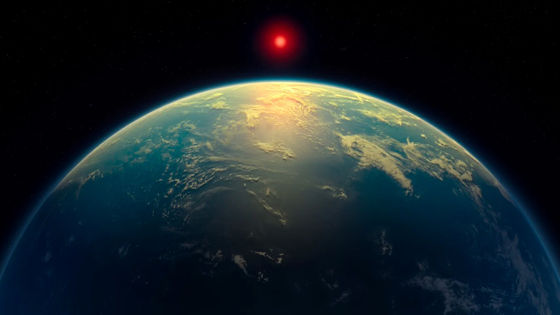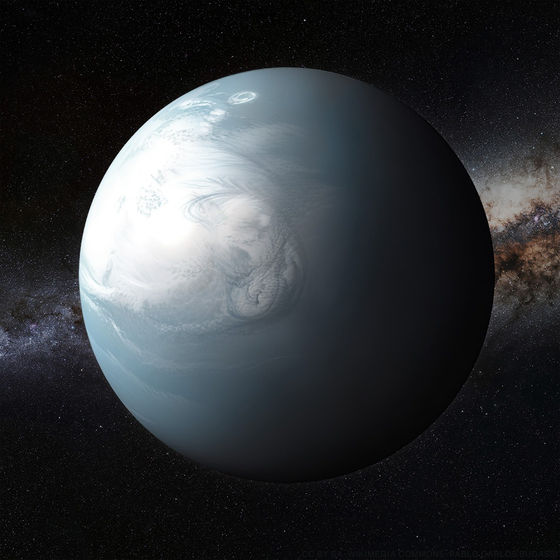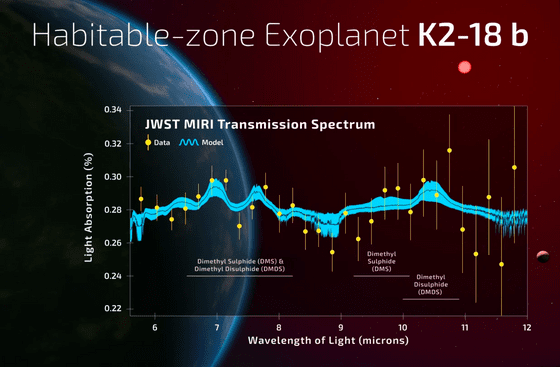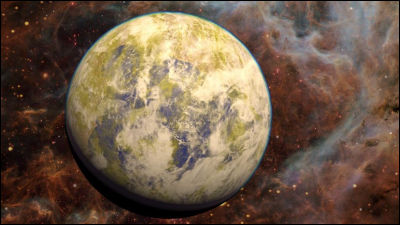Most promising signs of extraterrestrial life ever found on Hythean planet 124 light years away

In the history of the search for extraterrestrial life, many promising discoveries have been made, such as
[2504.12267] New Constraints on DMS and DMDS in the Atmosphere of K2-18 b from JWST MIRI
https://arxiv.org/abs/2504.12267
Strongest hints yet of biological activity outside the solar system - Hycean Worlds
https://hycean.group.cam.ac.uk/articles/hints-of-biological-activity-outside-the-solar-system/
Astronomers Detect a Signature of Life on a Distant Planet - The New York Times
https://www.nytimes.com/2025/04/16/science/astronomy-exoplanets-habitable-k218b.html
In a paper published in the academic journal The Astrophysical Journal Letters on April 16, 2025, Professor Nik Madhusudan and his colleagues from the University of Cambridge's Institute of Astronomy reported that they had detected the organic sulfur compounds dimethyl sulfide (DMS) and dimethyl disulfide (DMDS) in the atmosphere of K2-18b , a planet located about 124 light years away from Earth in the direction of Leo.
K2-18b is a planet with 8.6 times the mass and 2.6 times the size of Earth, located in the habitable zone where liquid water can exist. Previous research has shown that the atmosphere may contain carbon-based molecules such as methane and carbon dioxide, as well as water vapor, so K2-18b is also known as a ' hycean ' planet, with an ocean beneath a hydrogen-rich atmosphere.

by
The only source of DMS and DMDS on Earth is life, produced primarily by marine microorganisms such as phytoplankton. The team sees their results as promising, estimating statistical significance at 3σ (sigma), meaning there is only a 0.3% chance of a false positive. While this is below the 5σ (less than 0.00006%) required for scientific evidence, it is the strongest sign of life on an exoplanet to date.
Madhusudan and his team previously announced that K2-18b may have DMS in its near-infrared imaging and continuous-wavelength spectroscopy (NIRISS) and near-infrared spectrometer (NIRSpec) observations on the James Webb Telescope (JWST). In this study, they used another JWST instrument, the Mid-Infrared Instrument (MIRI), to capture a stronger DMS signal, as well as a signal indicating the presence of another related molecule, DMDS.
The research team believes that with another 16 to 24 hours of follow-up observations with JWST, they will be able to raise the significance level to 5σ, and soon be able to say with confidence that K2-18b has a DMS or DMDS.
'It's in nobody's interest to prematurely claim that we've found life,' Madhusudhan said at the press conference. 'This is a revolutionary moment. This is the first time humans have seen signs of potential life on a habitable planet.'

While this announcement is sensational, Madhusudan said more data is essential before any claim can be made that life has been found on an extraterrestrial planet.
For example, a paper just published on April 16, 2025 by planetary scientist Christopher Grein of the Southwest Research Institute in Texas and his colleagues suggests that K2-18b may be a harsh planet with an ocean of magma rather than an ocean of water, making it impossible for life, at least as we know it, to exist.
'Even if the presence of DMS and DMDS on K2-18b is proven, we cannot exclude the possibility that they originated through unknown chemical processes unrelated to life. Therefore, Madhusudan and other astronomers would like to conduct further theoretical and experimental studies to see whether the gases discovered in this study could be produced non-biologically.'
'Maybe in decades to come, we'll look back and say that this was the moment we reached out into the living universe,' Madhusudan said. 'Or maybe this result will be a turning point, and we'll suddenly find an answer to a fundamental question: are we alone in the universe?'
Related Posts:







